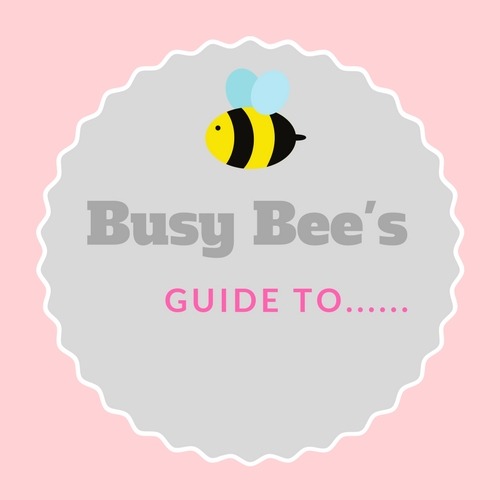 We all know that there’s been a massive reduction in the numbers of bees in the UK in recent years. So Busy Mum is turning into Busy Bee for National Gardening Week, and lending a helping hand to the lovely bees. However small your garden, or even if you don’t have one, there’s still things you can do to help.
We all know that there’s been a massive reduction in the numbers of bees in the UK in recent years. So Busy Mum is turning into Busy Bee for National Gardening Week, and lending a helping hand to the lovely bees. However small your garden, or even if you don’t have one, there’s still things you can do to help.
All bees need water, and nectar and pollen from plants. The nectar and pollen provide the energy that the bees need to keep buzzing, and the pollen contains protein and oils, and is what is converted into honey.
 There are lots of different species of bees, who all have their own characteristics and are active at different times of the year. Therefore, it’s important to provide a variety of plants if you can, especially flowers of different sizes. If you have limited or no outside space, hanging baskets and outside windowsill planters are a great option. Bees will love herb plants that have been left to flower, like basil, thyme or rosemary.
There are lots of different species of bees, who all have their own characteristics and are active at different times of the year. Therefore, it’s important to provide a variety of plants if you can, especially flowers of different sizes. If you have limited or no outside space, hanging baskets and outside windowsill planters are a great option. Bees will love herb plants that have been left to flower, like basil, thyme or rosemary.
Here are some great choices of garden plants to really help bees thrive:
Spring
Pussy Willow is great for queen bumblebees who will be setting up their new colonies, as well as the Chocolate and Clarke’s varieties of mining bee.
Apple / crabapple trees attract many species of bees to their white or pink blossoms, with red mason bees being major pollinators. Even if the fruit isn’t edible, you’ll have a lovely looking tree!
Summer
Lavender is a great hardy plant which will grow even in dry soil, and is popular with bumblebees, mason bees, flower bees and leafcutter bees. Plus your children will love ‘making perfume’
The spiky branches of hawthorn make for a great nesting area for bees, plus the white blossoms are popular with solitary bee species such as mason and mining bees. Plus your local birds will love the fruit.
Autumn
The bee bush (abelia) is an evergreen shrub which is brilliant for honeybees and bumblebees.
The tubular flowers of honeysuckle are great for long-tongued bees such as bumblebees, and they’re also very popular with moths at nightime.
Winter
Mahonia is another evergeen with bright yellow flowers which are full of nectar.
Ivy will produce bunches of greeny yellow flowers in winter if it is not cut back, which can be an excellent source of nectar for bees before they hibernate until spring.
Mudpie Fridays



Ooh, I’ve got lavender and rosemary so not a bad start. Would love to have a few more bees buzzing about the garden! #BloggerClubUK
It’s so lovely when you see them flying about (can’t say the same for wasps though!)
We’ve just planted some wildlife friendly seeds in the garden – can’t for the life of me remember what they are but I remember seeing a bee symbol on the pack. We had a bumblebee nest in our garden last year and I’ve been fascinated by them since then. I even made a bee drinking station out of a hanging basket and pebbles.
#BloggerClubUK
That’s a great idea about the drinking station, definitely going to try that!
I really want to plant some more bee friendly plants in the garden so this is really useful. We’ve already got some on your list but there are still a couple that we haven’t got yet. #bloggerclubuk
That’s great, even just one or two plants will make a big difference!